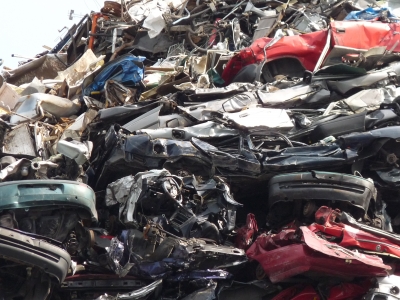The plants will be fully automated. The work would start from October in the first plant. The initial plant is expected to get equipment orders from the first quarter of 2017, and will run full capacity production by 2018, the company said.
The JV has been set up to meet India’s annual scrap requirement of 5-6 million tonnes, which is currently met through imports, the market for which is estimated in the range of $1.8 billion.
Scrap is currently being imported at around $200-300 a tonne, the firms said.
“Auto recycling (or scrappage), if implemented as per global standards, is not only environment-friendly, but also saves energy costs and minimises reliance on alternate resources,” said Mahindra Intertrade’s managing director Sumit Issar said.
Issar said that every tonne of new steel made from scrap steel saves substantial iron ore, coal, electricity and limestone. He added that the initiative will also lead to forex savings.
“Steel-makers in India import more than five million tonnes of scrap a year for recycling into finished steel. The locally available scrap will help reduce their cost of production considerably, while hi-tech shredding will help the country significantly reduce pollution,” said Mr. Issar.
He said that the facility will establish an automotive recycling capability for end-of-life of vehicles (ELVs) for collection, compaction, transportation, de-pollution, dismantling, shredding, recycling, and disposal.
“India’s demand for vehicles stood at 23.34 million in 2015. This JV has immense potential for further growth,” said MSTC’s chairman and managing director BB Singh.
Singh said that the capacity of the first plant will be 1-1.5 lakh tonnes depending on the product mix. The plant will begin commercial production by March 2018, added Mr. Singh.
Vehicle scrapping is a relatively new concept in India compared with the West. No recycling or scrapping provision is in place in the nation to deal with old and discarded vehicles.
A large number of vehicles are likely to come under the ELV category in India given the new, stricter norms on road-worthiness of automobiles and the recent National Green Tribunal guidelines on 15-year-old diesel vehicles.











